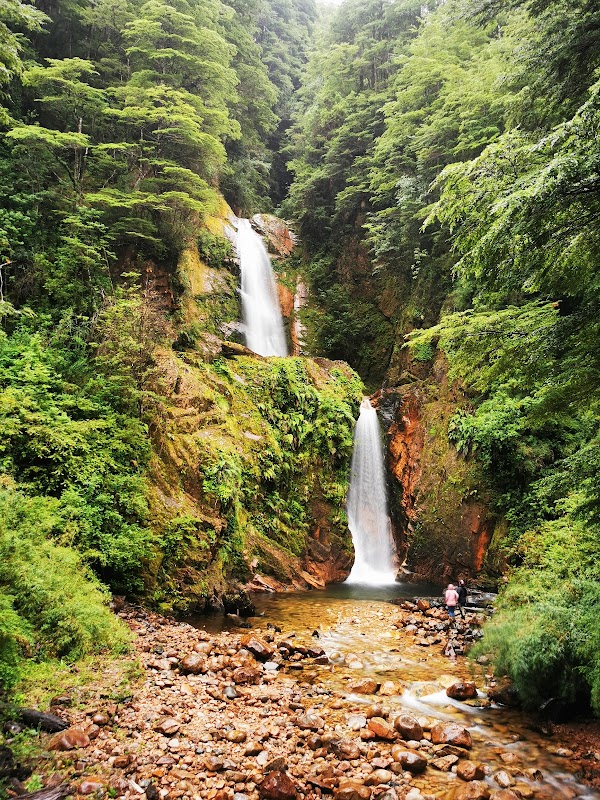
Fiesta Costumbrista in Coyhaique is a celebration of Patagonian culture that pairs rich traditions with the raw beauty of Chile’s southern wilderness. From folk dancing to local cuisine, this lively festival invites adventurers to experience the spirit of the region while discovering practical ways to navigate the event’s unique setting.
Choose Sturdy Footwear
Expect varied terrain—from cobblestones to grassy festival grounds that may become slippery with evening dew. Waterproof hiking shoes or boots are best to maintain grip and keep your feet dry.
Stay Hydrated in Summer Heat
January can bring strong sun and dry air. Carry at least one liter of water per person, and refill when possible. Avoid overexerting yourself during midday heat spikes.
Plan for Rapid Weather Changes
Layers are your best defense. The festival day may start warm but temperatures can dip with winds rolling off the Andes late afternoon or evening.
Use Local Transport or Walk
Crowds make parking scarce. Coyhaique’s compact city center makes walking practical and enjoyable, with side streets offering quieter observation points of festival activities.
Experience the Heartbeat of Patagonia at Fiesta Costumbrista in Coyhaique
Every year, the rugged city of Coyhaique in Chile's Aysén Region comes alive with the vibrant colors, sounds, and tastes of the Fiesta Costumbrista. This traditional festival offers an authentic glimpse into Patagonian culture, where locals bring their customs fiercely to life through folk music, dance, crafts, and cuisine. Unlike a passive celebration, the event challenges visitors to engage—with every step of the festival feel propelled by the natural pulse of the surrounding landscape.\n\nStreets bustle with vendors presenting handwoven textiles dyed by rivers and forest shadows. The scent of grilled lamb, roasting over open flames, dares you to linger. Dancers stomp with earthy energy, their movements echoing the rugged terrain of the region. It's a celebration deeply rooted in place, reflecting the fierce spirit of Patagonia itself—wild, honest, and unyielding.\n\nPlanning your visit demands some practical steps. The festival typically takes place in late January, reaching peak energy in the warm, long daylight hours offering a more comfortable climate for outdoor exploration. Expect varying terrain underfoot—from cobblestone avenues to grassy event grounds that can become slick after evening mist. Quality footwear is essential, or your stamina might be tested by both crowd navigation and the uneven surfaces.\n\nWhile Fiesta Costumbrista is more than a day trip, spend your time wisely by pairing festival time with short hikes on nearby trails, where the towering Andes shoulder the horizon. Hydration and sun protection are vital given the Patagonian summer sun pushing through the thin atmosphere. Carry water and layers to adapt to fast-changing weather, as mountain wetlands often roll in whispers of cold air without warning.\n\nThe festival's raw energy demands respect—it isn’t about conquering nature or culture but about joining a flow that challenges you to appreciate the force of tradition and terrain equally. Whether you’re a casual traveler or a seasoned adventurer, the Fiesta Costumbrista in Coyhaique offers a direct encounter with a culture and place fiercely itself, inviting you to participate rather than merely observe.
Nearby Trips
All Adventures
Boat Charters
Water Activities
Adventures near Coyhaique, Aysén
Discover the unique and memorable adventures that make Coyhaique, Aysén special.
Frequently Asked Questions
What is Fiesta Costumbrista exactly?
It is a traditional festival in Coyhaique, celebrating Patagonian customs through music, dance, crafts, and food. Visitors can immerse themselves in local culture while enjoying outdoor activities.
How do I get around Coyhaique during the festival?
The city center is compact and walkable. Due to limited parking and large crowds, walking or taking local transport is recommended to avoid congestion.
Are there any safety concerns for visitors?
Standard outdoor precautions apply: watch your footing on uneven terrain and stay hydrated. The festival is family-friendly but be mindful in crowded areas.
Is there an opportunity to explore nature nearby?
Yes, the surrounding Aysén region offers numerous trails and natural parks. Visitors often combine festival days with hikes to nearby viewpoints or the Simpson River.
Can I taste local cuisine at the festival?
Absolutely. Traditional Patagonian dishes like asado (grilled lamb), empanadas, and homemade preserves feature prominently at street stalls and communal eating areas.
What languages are spoken at the festival?
Spanish is the primary language. Basic English may be understood in tourist areas, but learning a few key Spanish phrases enhances interaction.
Recommended Gear
Waterproof hiking boots
Protect against wet grass and slick cobblestones, while providing support for extended walking during the festival.
Layered clothing
Prepare for fluctuating temperatures by wearing layers that can be added or removed easily.
Sun protection
A wide-brimmed hat, sunglasses, and high SPF sunscreen shield you from the strong Patagonian sun.
Reusable water bottle
Stay hydrated throughout long days outdoors while minimizing waste in the natural environment.
Local Insights
Hidden Gems
- "Mirador Cerro Castillo for panoramic views of the Andes"
- "Quiet artisan workshops off the main festival streets"
- "Riverside trails along the Río Simpson"
Wildlife
- "Andean condors soaring high"
- "Magellanic woodpeckers in forested zones"
- "Native guanacos grazing in nearby fields"
History
"The festival is rooted in Patagonian ranching traditions dating back to early settlers who shaped the culture and the land around Coyhaique, preserving a fiercely independent identity."
